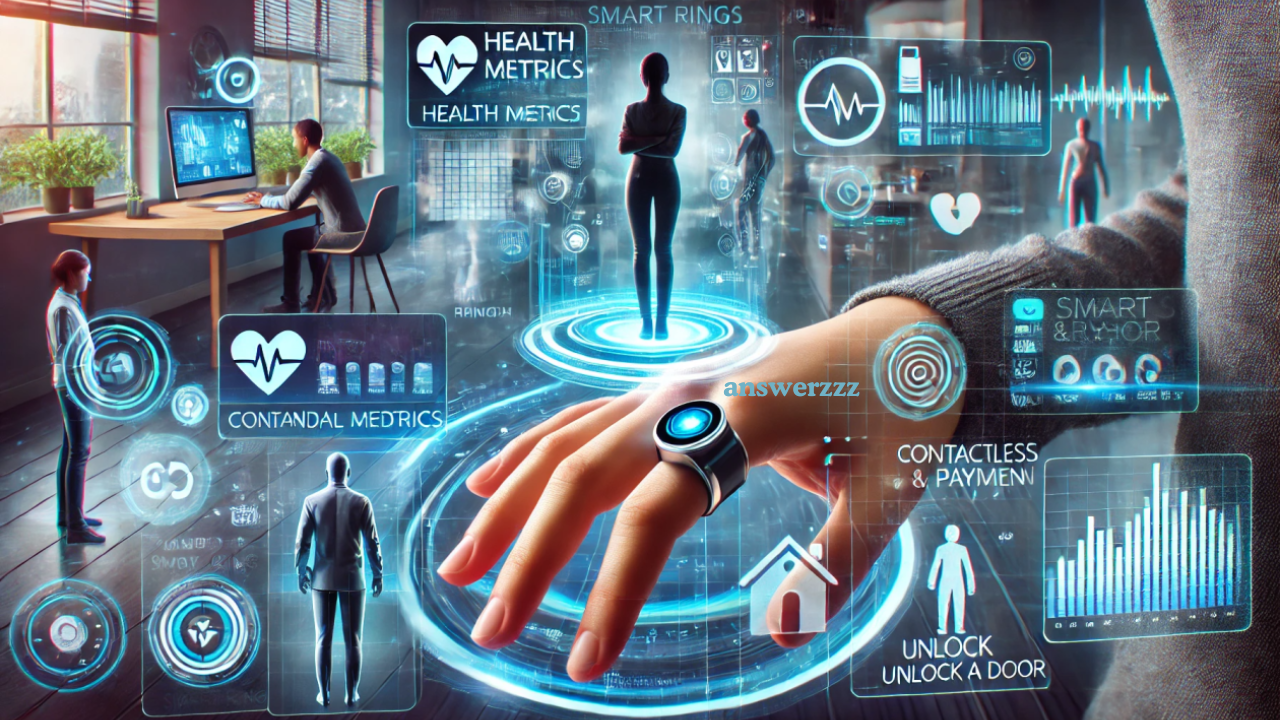In the world of technology, few sectors have experienced such rapid advancements as wearable tech. From fitness trackers to smartwatches, the ability to monitor health and activity in real time has transformed the way people live, exercise, and manage their well-being. But the future of wearable technology, particularly in the realm of smart fabrics and health monitoring, promises to be even more groundbreaking. By 2026, we can expect wearable tech to revolutionize healthcare, offering not only better tracking and diagnosis but also improved prevention and personalized treatment. In this article, we will explore the current landscape of wearable tech, the evolution of smart fabrics, and what the future holds for health monitoring in 2026.
1. The Rise of Wearable Technology
Wearable technology has come a long way since the early days of pedometers and bulky heart rate monitors. Today, wearables such as smartwatches, fitness bands, and even smart glasses are an integral part of many people’s daily lives. These devices collect a wide array of data, from basic metrics like steps taken and calories burned to more advanced information such as heart rate variability, sleep patterns, and blood oxygen levels.
The trend toward health and fitness monitoring has been fueled by the growing awareness of the importance of preventative healthcare. People are no longer just interested in treating illnesses—they want to stay healthy and detect issues before they become serious. As a result, wearables have evolved from simple gadgets into powerful tools for health management.
2. The Role of Smart Fabrics in Wearable Technology
As the wearables industry moves toward 2026, the next big leap will come from smart fabrics—textiles that incorporate sensors and other technology into the fabric itself. These fabrics can monitor a person’s vital signs, track movement, and even respond to environmental changes. Unlike traditional wearables, which are often bulky and require a separate device like a smartphone, smart fabrics are integrated into clothing, making them more comfortable and seamless.
Smart fabrics use a variety of technologies to function. For instance, electrochromic fibres can change colour in response to stimuli, while piezoelectric fibres can convert mechanical stress (like a person’s movement) into electrical energy. Conductive fabrics are embedded with tiny sensors that can measure everything from heart rate and body temperature to muscle tension and hydration levels.
One of the most exciting applications of smart fabrics is in the realm of health monitoring. In the near future, people will be able to wear clothing that not only tracks their physical activity but also monitors their health in real time. Think of shirts that can monitor your heart rate, sweat levels, and body temperature all at once, or socks that track your posture and gait to prevent injury. This represents a new frontier in health technology, where monitoring becomes an integrated part of daily life.
How Brain-Computer Interfaces Are Bridging Humans and Machines
3. Current and Future Applications of Smart Fabrics in Health Monitoring
a. Continuous Health Monitoring
In 2026, smart fabrics will enable continuous health monitoring without the need for external devices or manual input. For example, a smart shirt could monitor an individual’s heart rate, respiratory rate, and temperature throughout the day, alerting the wearer to any abnormal changes in real-time. This could help identify early signs of health issues such as arrhythmias, infections, or even stress levels before they develop into more serious conditions.
For individuals with chronic health conditions, smart fabrics could play an essential role in long-term management. A person with diabetes, for instance, could wear a smart shirt that continuously monitors their blood glucose levels. This would provide both the individual and their healthcare provider with up-to-date information to help manage the condition more effectively. Such wearables could even be programmed to alert the wearer when it’s time to take medication or make lifestyle changes based on real-time data.
b. Posture and Movement Monitoring
Another exciting application of smart fabrics is in the realm of posture and movement monitoring. These smart fabrics can be integrated into clothing such as jackets, shirts, or pants, and use sensors to track movement and alignment. This will help individuals who suffer from back pain, poor posture, or physical rehabilitation needs. The clothing would be able to monitor movements such as bending, twisting, or lifting and provide real-time feedback to encourage proper posture or suggest modifications to movements that might be harmful.
In a professional setting, athletes could wear smart clothing that tracks their movements during training to prevent injury and optimize performance. By 2026, we might even see smart sportswear used by top athletes to measure muscle fatigue, hydration levels, and exercise intensity, providing them with precise insights into their bodies during workouts.
c. Monitoring Vital Signs During Sleep
Sleep is an essential component of good health, and poor sleep can lead to a variety of issues, from chronic fatigue to more severe conditions like heart disease. Smart fabrics integrated into sleepwear could help monitor vital signs such as heart rate, breathing patterns, and body temperature throughout the night. This data could help individuals improve their sleep quality and identify underlying issues like sleep apnea, insomnia, or restless leg syndrome.
By 2026, wearable tech embedded in sleepwear could provide real-time data to help healthcare providers diagnose and treat sleep disorders with more precision. For example, smart blankets or smart pillows might have the ability to adjust their temperature or provide gentle vibrations to help individuals sleep more soundly.
4. Integration with Artificial Intelligence and Big Data

The future of wearable technology, including smart fabrics, will not be limited to just data collection—it will also leverage powerful artificial intelligence (AI) and big data to provide insights and recommendations. AI-powered algorithms can analyze the vast amounts of data collected by smart fabrics and identify patterns that would be difficult for humans to detect.
For instance, AI could help predict potential health issues before they occur by analyzing a person’s vital signs over time. If the system detects subtle changes in blood pressure, heart rate, or other key metrics, it could alert the wearer or their healthcare provider to take preventative action. These predictive capabilities could be a game-changer in preventative healthcare, enabling early intervention and reducing the risk of serious illnesses.
Moreover, the integration of wearable devices with big data will allow for a more personalized approach to healthcare. The data collected from thousands (or even millions) of wearable devices will create large datasets that can be used to refine treatments and develop personalized health plans. For instance, if someone’s wearable tech detects a consistent pattern of stress or fatigue, the system might suggest stress management techniques or lifestyle changes tailored to that individual.
5. Challenges and Considerations for Smart Fabrics in Health Monitoring
As promising as smart fabrics and health-monitoring wearables are, several challenges must be addressed before they become mainstream by 2026.
a. Data Privacy and Security
The ability to collect and analyze personal health data comes with significant concerns about data privacy and security. In the wrong hands, sensitive health information could be misused or exploited. Companies creating smart fabrics and wearable devices will need to implement robust encryption methods and ensure that data is stored securely. Additionally, users must be given control over who has access to their data and how it is used.
b. Accuracy and Reliability
Another challenge for wearable health tech is the need for accuracy. While wearables are excellent at providing general insights, they may not always be as accurate as traditional medical devices. For instance, a smart fabric may provide an estimated heart rate or blood pressure reading that is close to, but not exactly, the reading from a clinical setting. Ensuring that these devices meet medical-grade standards will be essential for their adoption in healthcare.
c. Comfort and Durability
For wearables to be successful in the long run, they must be comfortable and durable. Smart fabrics need to be lightweight, breathable, and easy to care for. Clothes with embedded sensors should also be flexible and washable without damaging the technology inside. Manufacturers will need to continue innovating in fabric design to make these wearables as comfortable as they are functional.
The Road Ahead: A Healthier, More Connected Future
By 2026, wearable technology, especially smart fabrics, will likely be an integral part of how we manage our health and well-being. These innovations will allow for continuous, non-invasive health monitoring, offering real-time insights and early warnings for potential health issues. Coupled with the power of AI and big data, these wearables will enable more personalized healthcare and could even predict and prevent serious conditions before they arise.

Smart fabrics, once fully developed, will make health monitoring a seamless part of daily life, blurring the lines between fashion and technology. The future of wearable health tech is exciting and holds the potential to transform not just how we track our health but how we understand and maintain it. With a few key challenges to overcome, wearable tech in 2026 promises to lead us into a new era of health and wellness, where technology works alongside us to keep us healthier, and longer.




